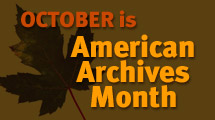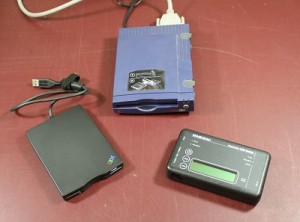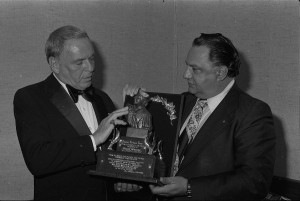 Here in the Archives, most of our material is paper-based. We have more than 4600 linear feet of archives and manuscript materials in our Vault, amounting to millions of pieces of paper, strips of film, objects, and other tangible things available for research.
Here in the Archives, most of our material is paper-based. We have more than 4600 linear feet of archives and manuscript materials in our Vault, amounting to millions of pieces of paper, strips of film, objects, and other tangible things available for research.
What about all the things that can’t be touched? More and more electronic materials are appearing in the collections we take in, and are being created by the organizations whose records we preserve. At Seton Hall, there are records of historical significance in emails, databases, websites, shared and co-edited documents, spreadsheets, twitter feeds, and cell phones. Archives exist to collect the materials that uniquely document their organization, and in the 21st century, a lot of those documents do not exist on paper.
Many times, people assume that once something is in saved on the computer or posted on the internet, it’s forever. At least, it always seems that way when there’s an embarrassing photo out there. But in fact, if you’ve ever lost some work to an ill-timed battery failure or the fall of a laptop, been frustrated by a dead hyperlink or a 404 Not Found error, or just plain been completely unable to find that file that you KNOW you saved, you also know that plenty of electronic records are lost all the time. If you’ve tried to open a document or photo in the wrong program or operating system, or found an old floppy disc with a label like “Important Papers,” you also know that even being able to find an electronic record doesn’t mean you can actually use it.

So what are we doing in the Archives to make sure that the important records of our time will be saved for the historians and students of the future?
Digital preservation is the term often used in libraries and archives to refer to saving these materials. In an archive, just as we are very particular about the order of papers in boxes and folders, the types of folders and boxes we use to store those papers, and the way those materials are described, we are also very careful about digital preservation practices. Archival digital preservation is about a lot more than getting extra cloud storage to store more files; it’s about doing the best we can to make sure the files we’re saving now will still be readable and still look pretty much the same to the person who wants to use them in fifty years. We collect metadata, information about the files and records we’re saving, that describes not only the content, but the programs used to create and use the content, as well as checksums, information that can be used to see if a file has become corrupted over time. Steps can be taken to update files to newer formats so they can be used in updated software, called migration, or software can be maintained or replicated so files can be used as they were when they were created, called emulation. Websites and versions of websites can be saved and accessed offline, and some programs even exist to save and search across social media platforms.

In the Archives and Special Collections Center, we are still planning out our program to collect and save some of these records. It’s a big job that requires many different programs and people working together, and nobody has all the answers just yet.
So what can you do? Whether your papers and files ever end up in an archive or not, there are some simple things you can do to keep track of your electronic records and make sure you can find what you need when you need it.
- Come up with a simple way of naming and organizing your documents, pictures, and emails that makes sense to you, then write it down and keep it somewhere easily accessible (which means not in the same place you’re storing your files!).
- Before you upgrade to a new computer or new phone, make a back-up copy of your important files and save them somewhere else, then make sure you can open everything in the new system.
- Schedule a regular time to clean out and sort your email inbox.
- Try to store things in more than one physical location, such as BOTH your computer and phone, as well as a cloud storage service.
- Take a look at what the experts have to say! The Library of Congress has an excellent set of resources to help you save your own and your family’s stuff, and the folks in the POWRR program have gathered resources to help you save your social media life.
And if you want to help preserve more digital history, check out the resources at the National Archives and Records Administration’s Citizen Archivist Dashboard or help identify photographs posted on the Flickr Commons.

